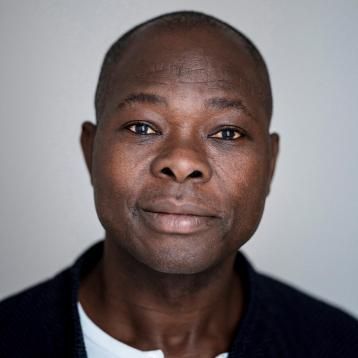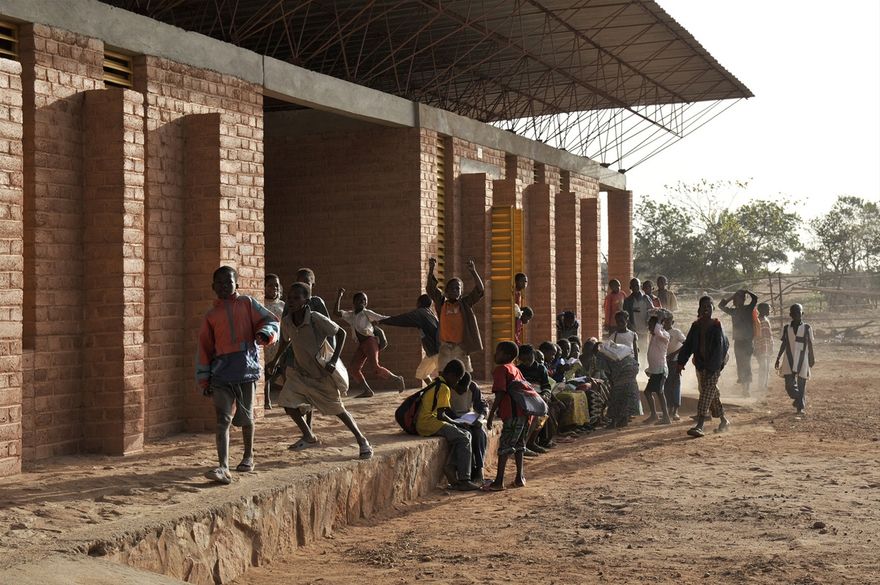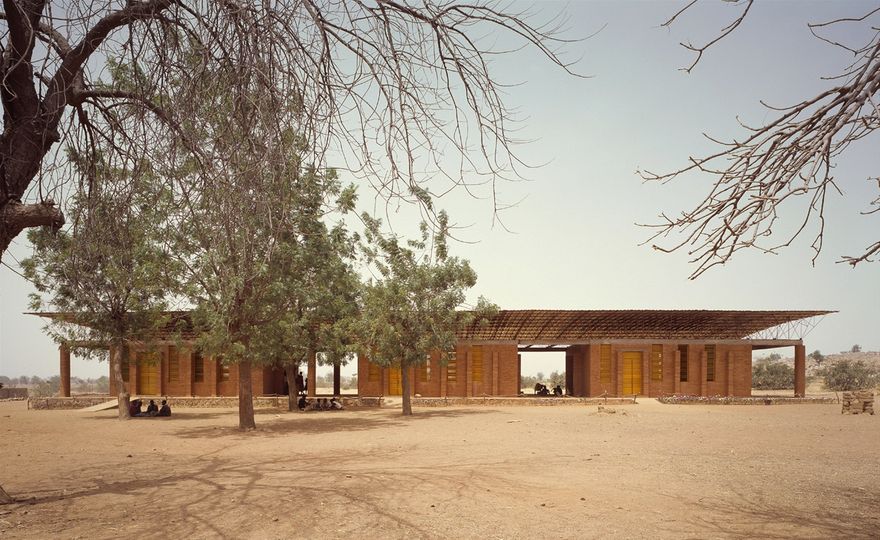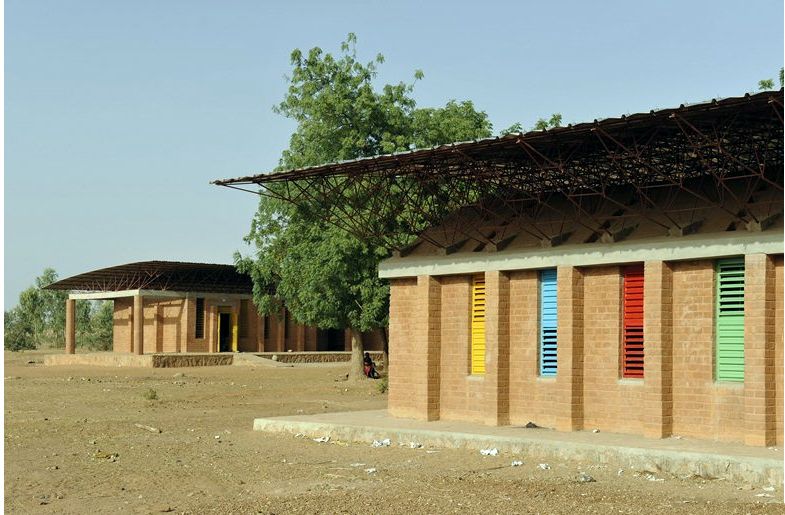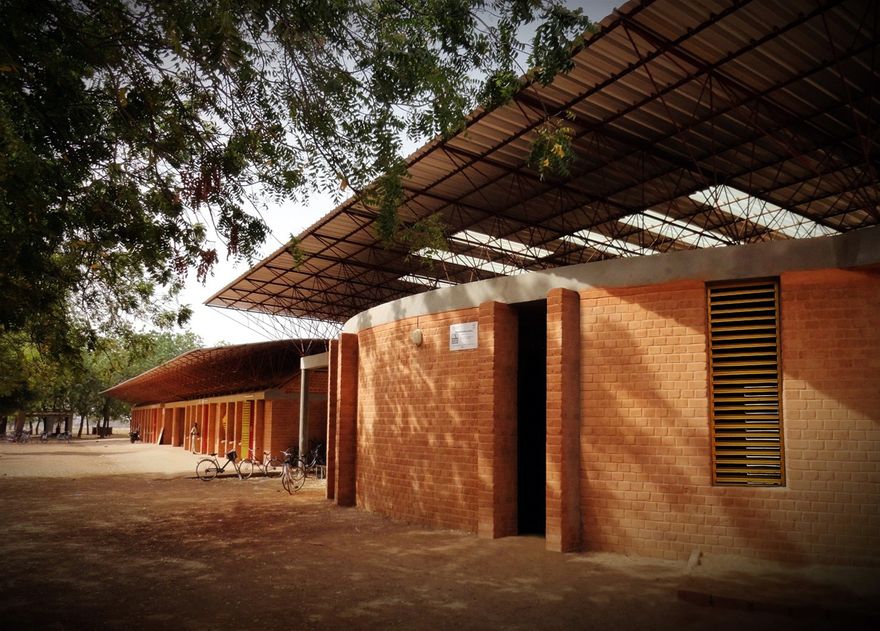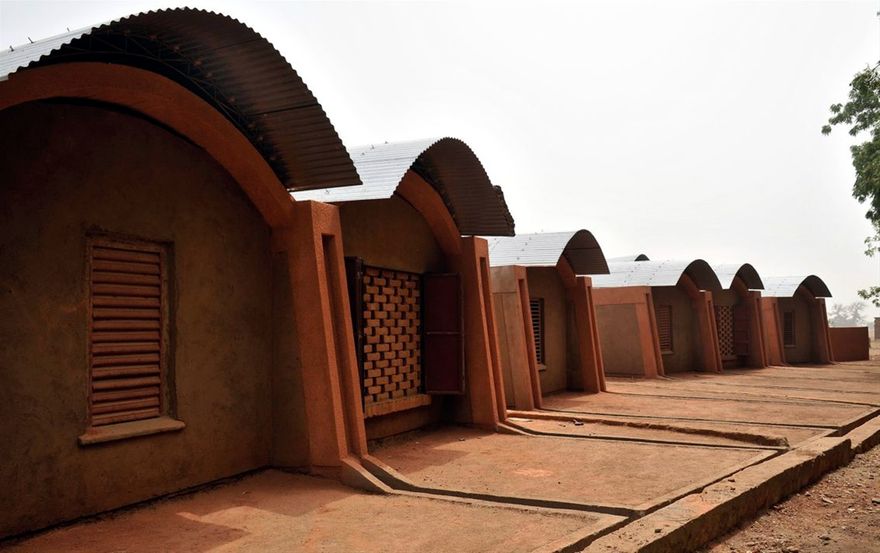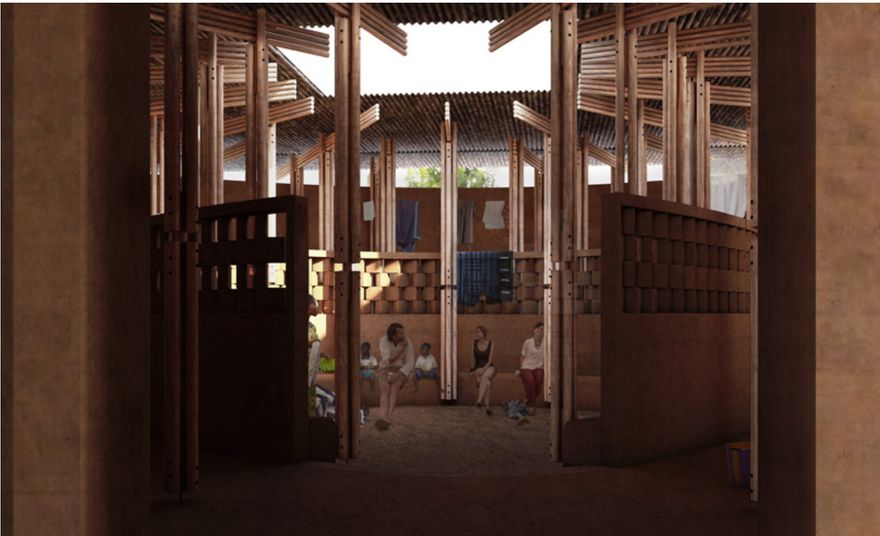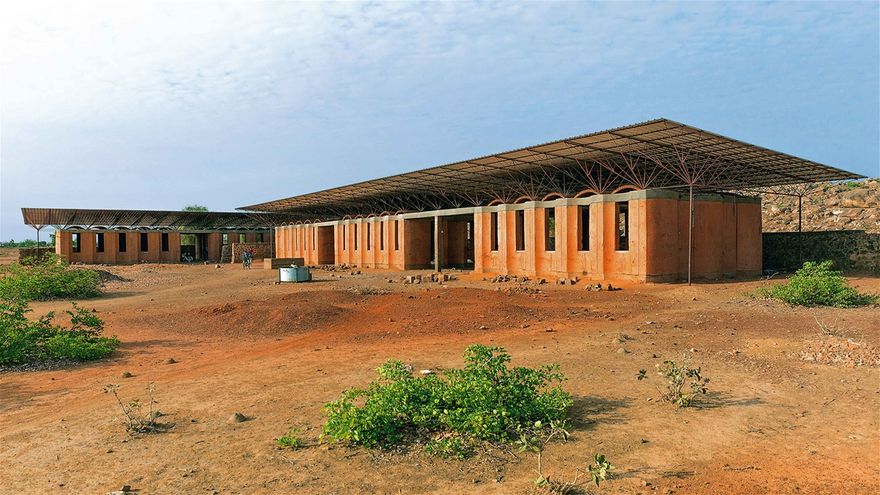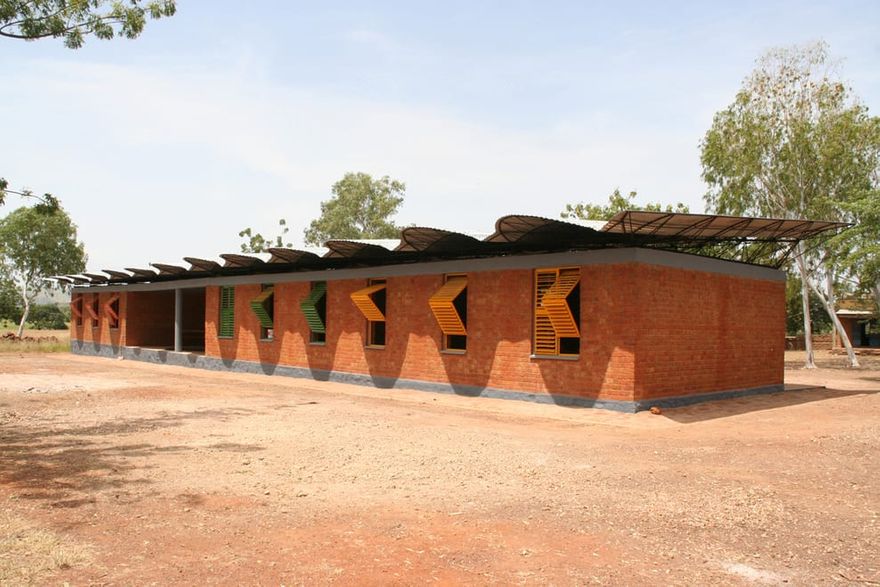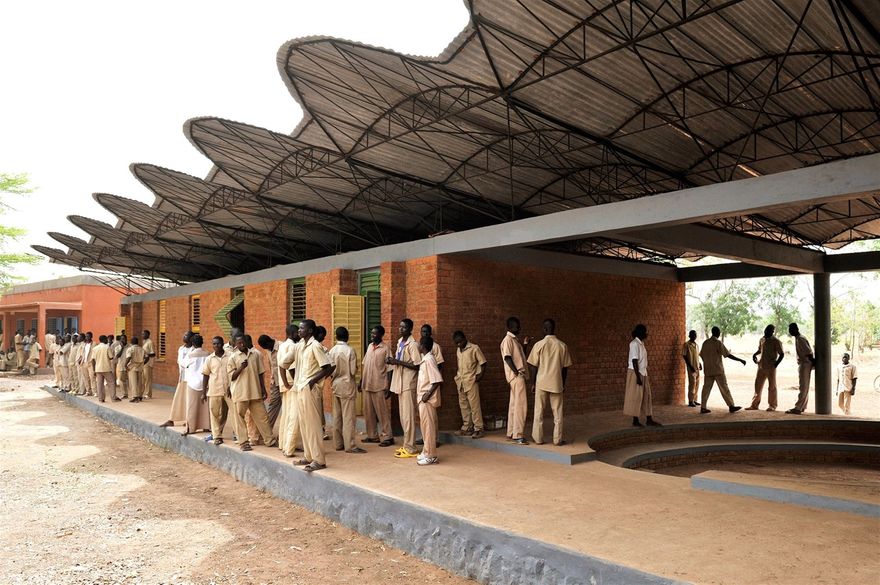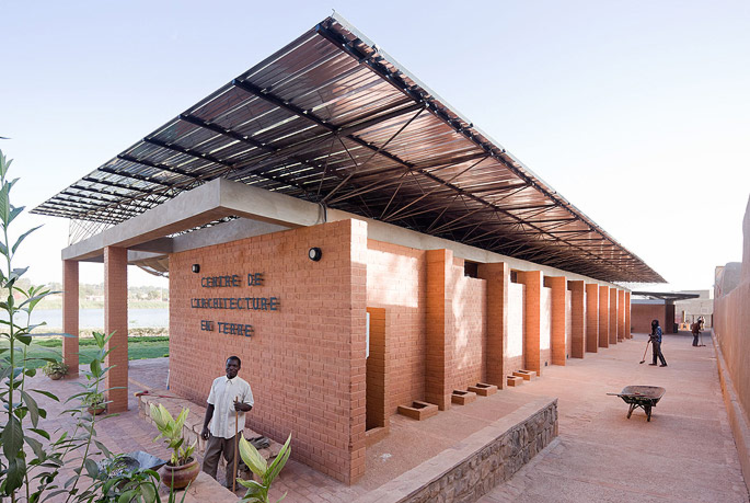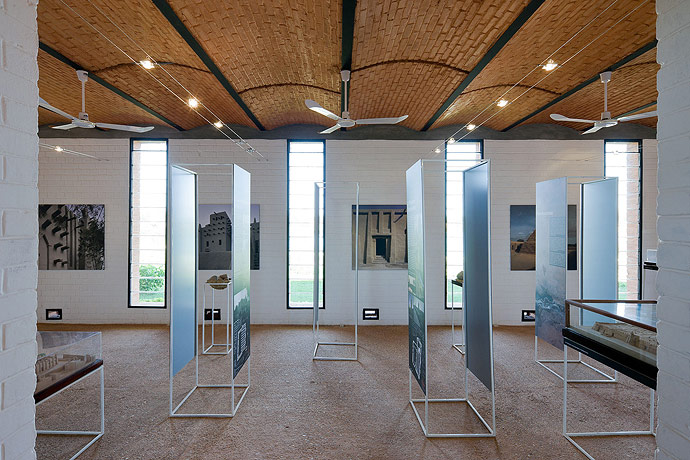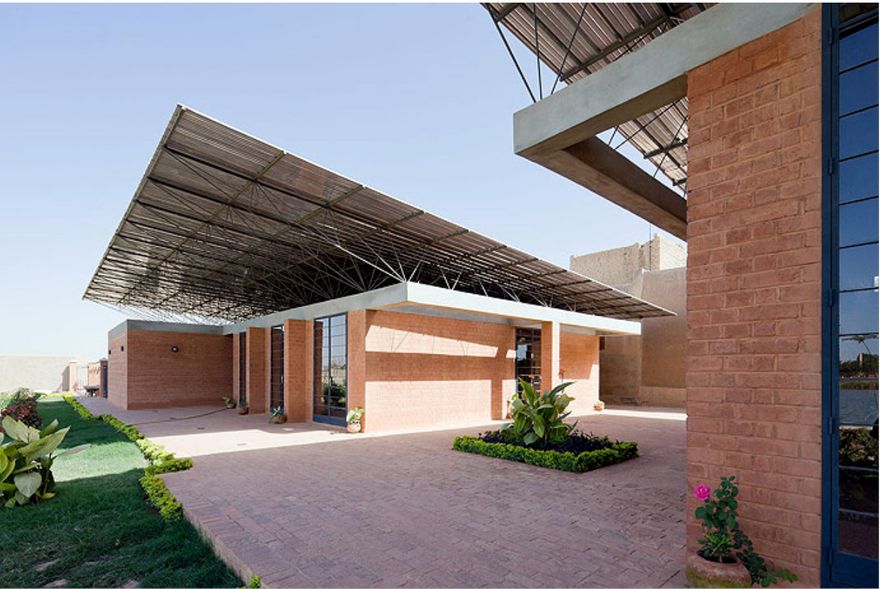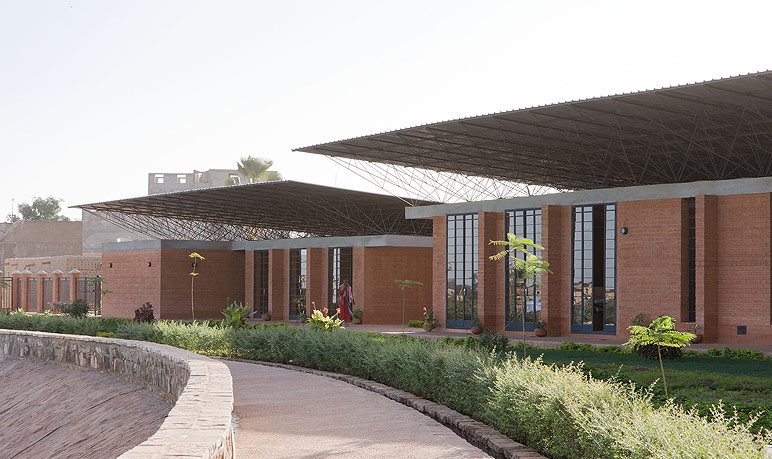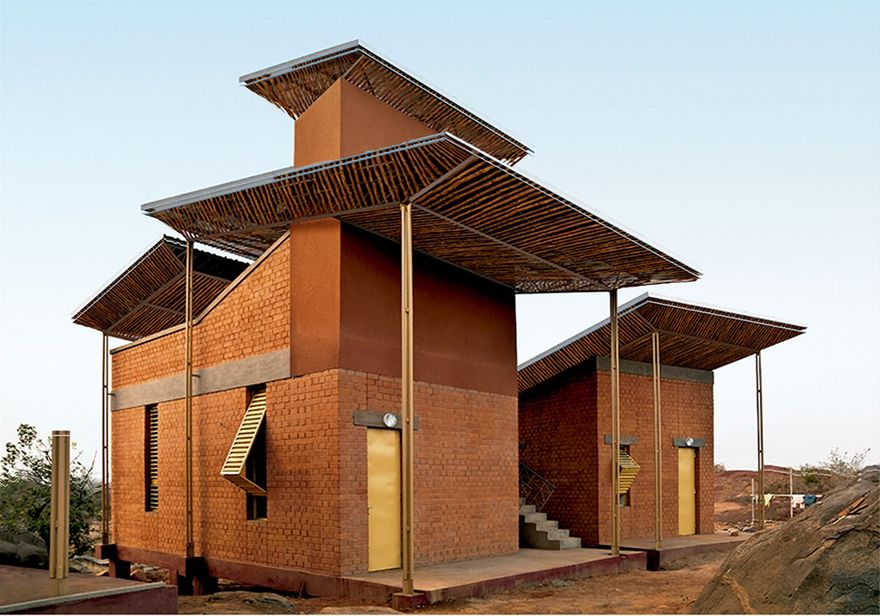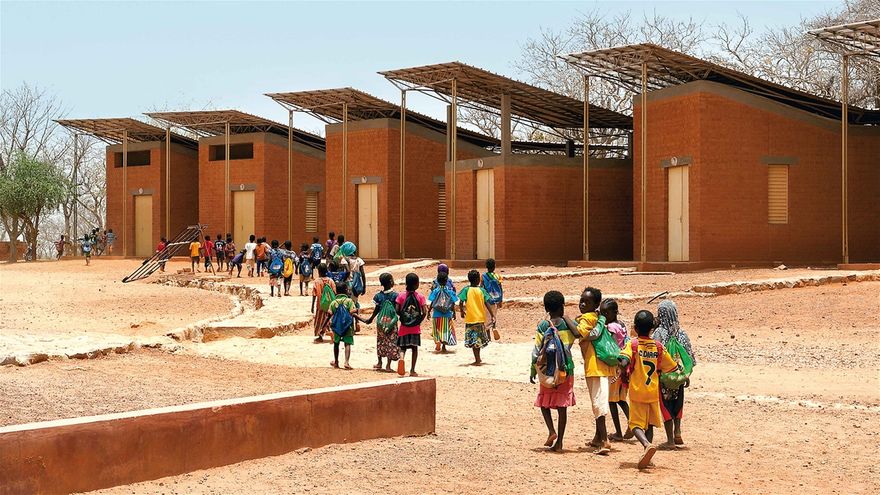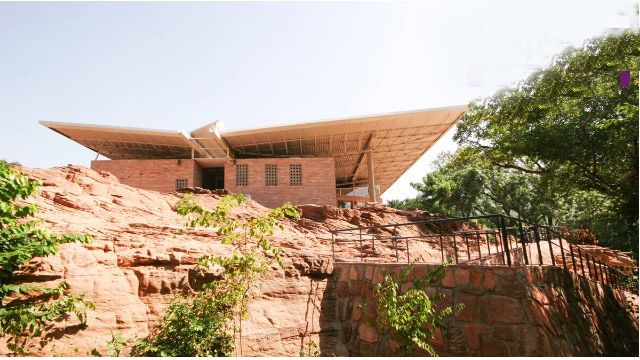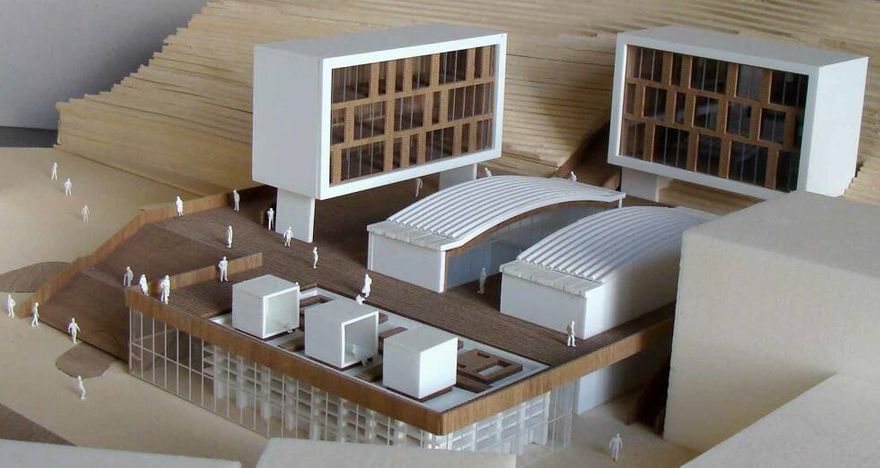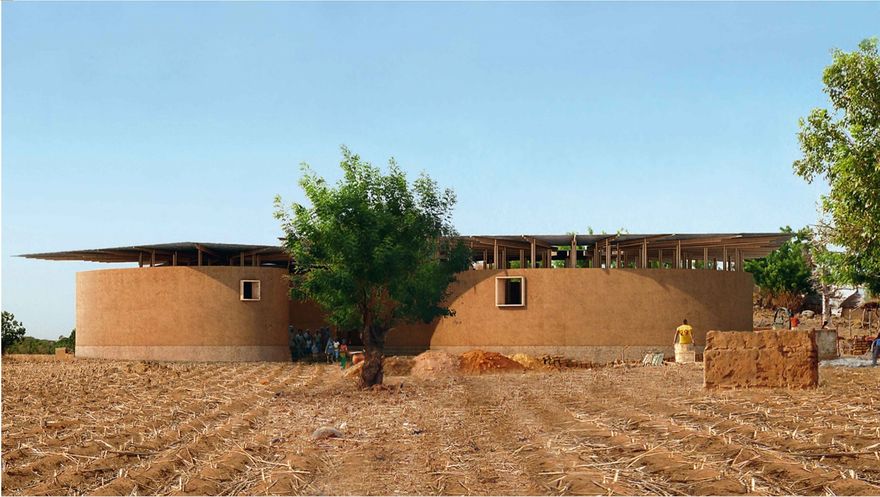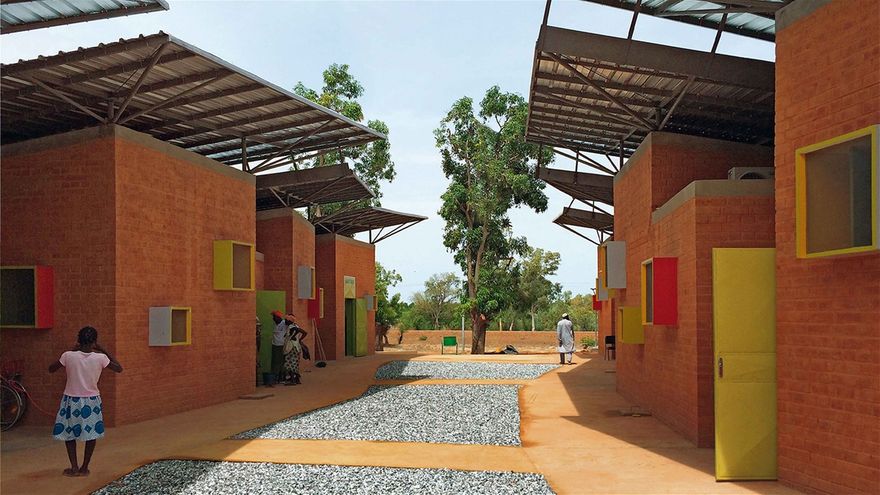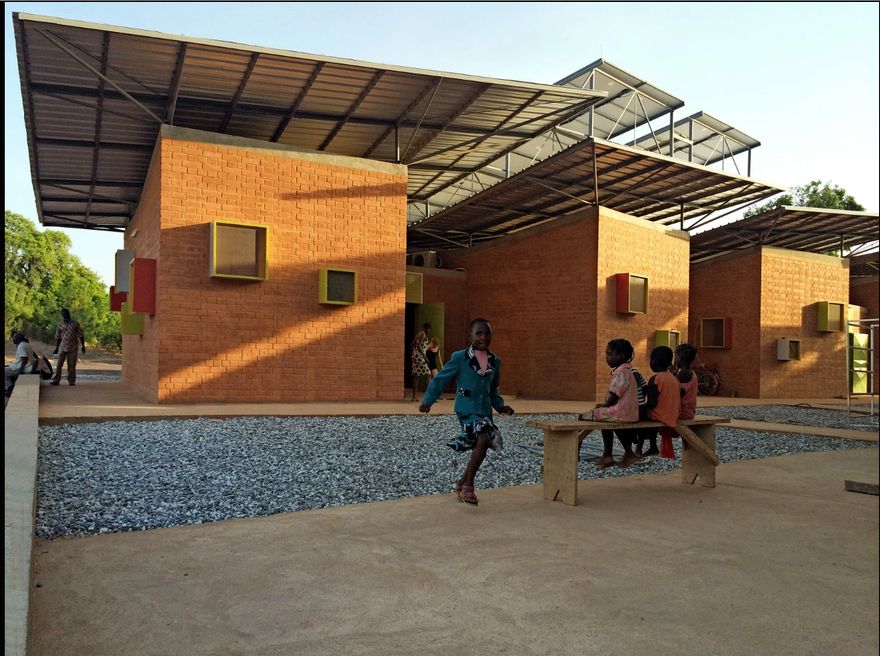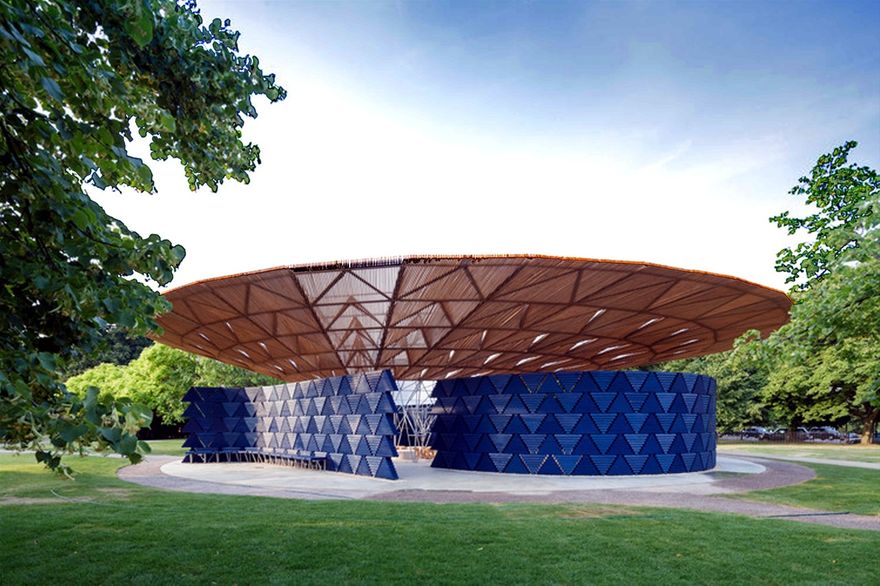Tesdorf Designs
Welcome to Architectural Information
FEATURED ARCHITECT
DIEBEDO FRANCIS KERE
DIEBEDO FRANCIS KERE'S LIFE
Kéré was born in the village of Gando, Burkina Faso. He was the first child in the village to be sent to school as his father, the village chief, wanted his eldest son to learn how to read and translate his letters. Since no school existed in Gando, Kéré had to leave his family when he was 7 years old to live with his uncle in the city. After finishing his education, he became a carpenter and received a scholarship from the Carl Duisberg Society to do an apprenticeship in Germany as a supervisor in development aid. After completing the apprenticeship, he went on to study architecture at the Technical University of Berlin, graduating in 2004. During his studies, he felt it was his duty to contribute to his family and to the community which had supported him and to give the next generation the opportunity to follow in his footsteps.
In 1998, with the help of his friends, Kéré set up the association Schulbausteine für Gando e.V. (now Kéré Foundation), which loosely translates as "Building Blocks for Gando", to fund the construction of a primary school for his village. His objective was to combine the knowledge he had gained in Europe, with traditional building methods from Burkina Faso. He completed his studies and built the first school in Gando as his diploma project in 2004, while also opening his own architectural office Kéré Architecture.
Diebedo Francis Kere
PROJECTS IN GANDO
Gando, Burkina Faso The village of Gando is located southeast of Ouagadougou, Burkina Faso's capital. The 3000 inhabitants live in small mud huts with tin or straw roofs. The huts are gathered in small groups forming communities. The village has no access to running water or electricity, and the literacy rate remains below the national average of 25%. According to the UN Human Development Index in 2011, Burkina Faso is the 7th least developed country in the world.
Lack of education, low income, and life expectancy hold back the country's development, and most people are subsistence farmers, remaining dependent on the harsh climate. There is virtually no rain between October and June, and daytime temperatures can easily reach 45 °C. The collaborative processes Kéré developed with Gando inhabitants and the innovative, local and ecological techniques and materials they created led Kéré to receive a Global Award for Sustainable Architecture in 2009.
Gando Primary School, Burkina Faso 2001
EARLY CAREER
GANDO PRIMARY SCHOOL
Primary School in Gando The first primary school was completed in 2001. Virtually all schools in Burkina Faso are built out of concrete and look somewhat out of place in the Sahel. Concrete production is expensive and requires a lot of electricity. Concrete buildings are not well suited to the climate in Burkina Faso, as the interior becomes intolerably hot, making it difficult for pupils to concentrate. Earth is often regarded as a building material for poor people, but Kéré wanted to use locally available resources. The primary school was built out of mud bricks, something the community was initially somewhat skeptical about. They were concerned that a mud brick construction would not survive the rainy season. But Kéré's innovative design provided the solution. A wide, raised tin roof protects the walls from the rain and allows air to circulate underneath in order to keep the building cool.
The community was delighted to find the school still standing after ten years, and the building is much cooler and more pleasant to work in than the conventional concrete school buildings. Kéré's design has become renowned throughout Burkina Faso, and won the Aga Khan Award for Architecture in 2004. One of the major issues encountered was how to explain plans and designs in a village where most people are illiterate. On drawing a preliminary plan in the sand he found the community fully engaged in the project, many of them coming up with their own suggestions of how to improve it.
As Kéré says, “Only those who are involved in the development process can appreciate the results achieved, develop them further and protect them”. The entire population of Gando took part in the construction of the school. Everybody wanted to help – women prepared the floor while the men pressed earth for the brick walls and collected stones for the foundations. They received on-site training in construction techniques that they could use to build their own houses and to get jobs.
Two neighboring villages were impressed by Gando's community's organization and achievement. They are now, step by step, building their own school in cooperation with Gando. The value of this project is also recognized by the local authorities: not only are they paying the teachers in the primary school, but they also contribute by employing more and more young people from Gando on their own construction projects.
Gando Primary School, Burkina Faso 2001
GANDO PRIMARY SCHOOL EXTENSION
Primary School extension in Gando The capacity of the primary school built in 2001 soon became too small to meet the rapidly increasing demands. The building had been designed to accommodate 120 students, but by 2007 the number of pupils had reached 300. Therefore, the construction of a new building with four classrooms, a school kitchen, a library, and a football pitch began in November 2005. This more than doubled the capacity of the primary school, and approximately 700 pupils attend classes today. The construction of the school extension was designed to suit the hot climate and to make use of resources available locally.
Every morning for a year, the children of Gando brought a stone to the construction site to provide the material for the foundation, showing them how their personal actions could contribute to a community project. As with the primary school, the big overhanging tin roof protects the clay walls from sun and rain. The air between the ceiling and roof becomes very hot, causing it to rise, and draw cooler air from beneath. In this way, the combination of solar and thermal energy produces air circulation and a cooling effect in the classrooms.
The first primary school used a flat roof which was effective, but required a large amount of steel cladding, making it expensive. Therefore, the primary school extension uses a rounded vault roof, which needs fewer steel supports. The cooler temperatures create much better working conditions and considerably influence the pupils’ achievements. Today, they have the best academic results in the region.
Gando Primary School Extension, Burkina Faso 2007
SCHOOL LIBRARY IN GANDO
The library completes the school extension in Gando. In a region with a literacy rate well below the national average of 25%, most pupils’ parents are illiterate and they have no books at home. The library enables pupils to widen their horizons and to gain a deeper understanding of their school subjects and the world around them. It is also open to non-students and is, therefore, a valuable resource for the entire community.
The eucalyptus facade around the library creates a calm and open space in which pupils can both study and relax. In Burkina Faso, eucalyptus trees are usually used as firewood since they dry out the soil and only create a small amount of shade. This is the first time in Gando that eucalyptus wood has been used for construction. The roof's design also represents a technical innovation: for the first time, traditional clay pots have been cut in half and inserted in the ceiling, letting in light and allowing air to circulate.
Gando School Library, Burkina Faso 2012
GANDO TEACHERS' HOUSING
New Teachers' accommodation in Gando
The housing situation for the teaching staff in the countryside is an important challenge for the whole country. Teachers often refuse to leave the cities for the countryside, since accommodation is basic and in short supply. Long commutes and bad roads can delay teachers, hampering the education of the pupils. This was a problem for Gando in 2001. To resolve this problem, teachers’ accommodation was built on the school premises in 2003.
The first aim of the teachers’ housing project was to develop an environmentally friendly and sustainable housing concept, adapted to people's needs and financial situations. The houses had to offer a reasonable amount of comfort in order to attract teachers and to give them a pleasant working environment. The housing concept is based on a simple unit built in the traditional style. It can be constructed as a single unit for one person, or as several units which can be combined for families. From the start, the inhabitants of Gando took an active part in every step of this project: they not only observed but also participated in the development of construction techniques.
The construction materials consisted exclusively of local resources in order to allow the villagers to adapt or further develop the houses if they wished to. Climate is a decisive factor in the methods and materials used. Clay walls and the adobe roof keep the houses cool and regulate the room temperature. This technique works so successfully that the houses have acquired the name “wonderful fridges”, a great compliment for a house in Burkina Faso.
Teachers' Accommodation at Gando, Burkina Faso, 2003
GANDO MANGO TREE PROJECT
Kéré's dream is not just to build schools and to provide education, but to create an oasis in which the needs of the villagers of Gando are fulfilled. In order to do this, he has embarked on a project of planting mango trees. The project aims to address several major problems in the region. Starvation is rare, but malnutrition is common in Gando and the surrounding area. The main staple is “foufou”, which consists of pounded and boiled millet. It contains few vitamins, and most people eat it just once a day. Mangoes provide an important source of nourishment, and the vitamins help to strengthen the immune system.
Furthermore, mango trees provide a vital source of shade. Daytime temperatures often reach 40 °C. In the midst of this intolerable heat, the cool space under a mango tree becomes an important meeting place for the village community, where children play, study, and rest. A further objective is to teach pupils responsibility. Each pupil is given a tree to look after. In this way, they learn how to plant and care for trees, and this is the knowledge that they will pass on to their parents and the next generation. Due to the rapidly expanding population, and the predominance of firewood as the main source of fuel, Burkina Faso has lost 60% of its trees in the last 15 years.
This has led to detrimental consequences for the environment. Trees provide shade, protect the soil from erosion, stop desertification and regulate the groundwater regime. In addition to this, trees contribute to soil fertility, and to biodiversity in that they provide a habitat for many species. With Burkina Faso's hot and dry climate and the severe shortage of rain between October and June, many plants and saplings can simply not survive. In addition to this many are destroyed by termites. Pesticides and fertilizers are both prohibitively expensive and damaging to the environment.
Therefore, Kéré developed an innovative concept: In preparation for planting the tree a hole is dug and filled with old bones and meat and left for a few days. After a while, the bones and meat attract ants, which colonize the hole and eat the termites. This enables the trees to grow without needing any insecticide. Animals such as chickens are kept in the shade of the trees, and their dung provides natural fertilizer for the trees so that artificial fertilizers are not necessary. Instead of watering the trees twice a day,
Kéré came up with the following idea: placing traditional hand-made clay pots next to the trees, with drippers targeted directly to the roots. The clay pots prevent evaporation from taking place and only need to be filled once a week, giving the trees a small but constant supply of water. In this way, a simple yet effective method can make a positive impact on the lives of people in Gando.
GANDO SCHOOL GARDEN AND WELL
Most people in Burkina Faso are subsistence farmers, and in rural villages such as Gando, it is an overwhelming majority. This is a potential problem for education, as families expect their children to help out. It is therefore imperative to give pupils a working knowledge of agriculture and to make education relevant to them. To this end, an allotment has been established on the school grounds, and a well has been dug to provide water both for the school and for the village.
Alongside their classes, the pupils learn how to take care of the plants without using any pesticides or fertilizers, encouraging them to use sustainable methods in the future. In a region where food is scarce and most people have a very repetitive diet, the school garden provides an important contribution to food security.
GANDO SECONDARY SCHOOL
Secondary school in Gando An increase in government funding for secondary education in 2010 enabled the 50 pupils to begin classes. While waiting for new classrooms, their lessons have been held in the primary school. Construction of a secondary school began in May 2011 and opened in 2013. This is Kéré's biggest project yet. The new building complex will include 12 classrooms, a school hall, a library, an administrative building, and several sports fields. It will accommodate approximately 1000 students.
The layout is inspired by the traditional rural households in Burkina Faso: the classrooms are set out in a circular fashion forming a protected courtyard, shielding it from the dust and sand brought by the Harmattan winds. The structure is open on its West side, allowing a cool breeze to enter the area. The very hot temperatures, large class sizes, and lack of air-conditioning in Burkina Faso make it very difficult for pupils to concentrate. Therefore, we developed an innovative air-cooling system only using natural ventilation. The school is surrounded by a bank of earth, on which trees are planted. The trees provide shade, and rainwater is gathered to provide them with water. Perforated pipes are laid underneath the earth banks, and gather moisture.
The wind cools down as it blows through the pipes, and emerges in the classrooms through holes in the floor, providing a zero emissions under-floor cooling system. This design won the 2012 Global Holcim Award Gold. The secondary school uses the same roof design as the primary school, with a wide corrugated iron roof raised above a clay ceiling. Air circulates between ceiling and roof, heats up, and rises, creating a suction current below. This causes the cool air from the under-floor pipes to rise, reducing room temperature by an estimated 6 – 8 °C. With simple yet effective methods such as these, the school requires little electricity both in construction and maintenance. Burkina Faso's expanding population and the predominant use of firewood as fuel have resulted in major deforestation problems.
An estimated 60% of the country's trees have been chopped down in the last 15 years. Worse, reforestation programmes often plant eucalyptus trees which grow easily and quickly but soak up vast amounts of groundwater at the expense of local agriculture. In order to combat this problem, the secondary school uses wood from eucalyptus trees for construction, and mango trees are planted in their place. The mango trees need less water, produce fruit, and provide more shade than eucalyptus trees, which the pupils make use of during breaks. As with his other projects, the secondary school uses local manpower for construction.
Specialists trained by Francis Kéré supervise members of the local community, training them in the necessary building techniques. Rather than building the walls brick by brick, Kéré has devised a way of pouring mud and a small quantity of cement into a mould, which is much quicker. This skills transfer enables the villagers to replicate the building design and encourages them to adopt sustainable methods rather than the usual concrete option.
ATELIER GANDO
Developed in 2014 and still in construction, the Atelier is a building with the function of the community center and an on-site base for building projects. A group of students from the Accademia di Architettura di Mendrisio helped Francis Kéré plan and build the first steps of the construction.
Interior of Atelier Kere at Gando, 2014-2022 by Kere
Secondary School at Gando, Burkina Faso 2013
DANO SECONDARY SCHOOL
Secondary school in Dano, Burkina Faso The secondary school project in Dano, Burkina Faso was inspired by Kéré's previous work in Gando. The excessive daytime heat was once again the major issue, but this time there were different local resources. Laterite stone, native to the region, was used as the main building material. The building was set at an east-west orientation which reduces direct solar radiation onto the walls, and the sharply protruding roof creates a lot of shade. The roof design with its system of natural ventilation allows the air to circulate between the mud brick ceiling and the raised tin roof. The building consists of three classrooms, a computer room, and an office.
There is also an amphitheatre designed for use during break times. Finished in 2007, the building work was largely done by people trained in the Gando school projects, giving them the opportunity to use and develop their skills, while also reducing construction costs.
Dano Secondary School, Burkina Faso 2007
Secondary School at Dano, Burkina Faso 2007
CENTRE FOR EARTH ARCHITECTURE IN MOPTI
Centre for Earth Architecture in Mopti, Mali
The Aga Khan Trust for Culture has spent over 10 years renovating mosques in Northern Mali. Finished in 2010, the Centre for Earth Architecture in Mopti is part of this series of projects, following the restoration of the mosque and the construction of a new sewerage system. The Centre is intended to be much more than an exhibition space: the building is the product of the same ancient building techniques used in the Great Mosques in Mopti, Timbuktu and Djenné. It demonstrates how a material that is a part of the area's heritage can be used in a modern context.
The Centre is made up of an exhibition hall, a community centre, public toilets and a restaurant responding to the needs of the district management of Komoguel and visitors to the area, as well as the local community. From the top of the flood barrier, you can see that the building is aligned with the mosque. The building has a simple structure and its height corresponds to the neighbouring buildings without compromising the view of the mosque. When viewed from across the lake the Centre manages to maintain a connection with the mosque but does not dominate the view.
The Centre is divided, according to its programme, into three different buildings which are connected by two roof surfaces. Clay for the building was brought from 5 km away so that the red colour would contrast with the colour of the local buildings, which are all made using traditional mud construction. The rusty red colour of the laterite clay is due to its high iron oxide content. All the walls and barrel vaults in the Centre are made out of BTC (compressed earth blocks) and are not plastered or painted. These are very well suited to the climatic conditions as they create a natural temperature buffer, making indoor temperatures much more comfortable. The overhanging roof blocks keep the walls cool and provide shaded outdoor spaces.
The building is naturally ventilated through openings in the walls and vaults, therefore mechanical air-conditioning is not needed. Most vernacular buildings in Mopti have wooden ceilings filled with clay. Kéré uses a new system in this building that involves no wood – BTC vaults. He wants to promote the use of clay but to be sparing in his use of wood, as deforestation is a huge environmental issue in Mali. The landscape project includes wide public spaces and a promenade on the top of the flood barrier. The construction site was backfilled in order to make the lakeside accessible to the public.
Centre for Earth Architecture in Mopti, Mali 2010
Interior of Centre for Earth Architecture, Mopti, Mali 2010
Centre for Earth Architecture, Mopti, Mali 2010
Centre for Earth Architecture, Mopti, Mali 2010
OPERA VILLAGE AT LAONGO
Construction of the Remdoogo Opera Village in Laongo, Burkina Faso The project “Opera House for Africa” was initiated by Christoph Schlingensief. With Kéré the Board of Management developed a housing prototype for people affected by flooding. The opera village “Remdoogo” has been constructed on a 12-hectare site on a little rise in Laongo, one hour's drive from Ouagadougou and overlooking the West African landscape of the Sahel.
A festival theatre, workshops, medical centre and guest houses are planned, as well as solar panels, a well, and a school for up to 500 children and teenagers with music and film classes. Central to the project is the festival hall with the theatre inside. The stage and auditorium were designed and constructed for a theatre piece in Germany and later transferred to the Opera village. The seat rows and interior walls are covered with Burkinabe fabrics.
The theatre is completely enclosed by a 15 m high covering to shelter it from the outside conditions. Simple basic modules, which vary in quality and function depending on the equipment they house, comprise the entire village. Local people were employed to build the modules, and local materials such as clay, laterite, cement bricks, gumwood, and loam rendering will be used for construction. For reinforcing elements such as beams, columns, ring beams, and foundations, concrete was used. Due to the massive walls and large overhang of the roofs, air conditioning could be discounted in most buildings. The theatre hall was conceived as a place of encounter and exchange for people of different cultural and family backgrounds.
The Opera Village at Laongo, Burkina Faso 2010-2022
The Opera Village at Laongo, Burkina Faso 2010-2022
National Park of Mali at Bamako, Mali, 2010
NATIONAL PARK OF MALI, BAMAKO
To celebrate the 50th anniversary of the independence of Mali, the National Park in Bamako was renovated, gaining a new restaurant, a sports centre and several entrance buildings. The restaurant is situated on top of a rock formation and is arranged around different height levels. From this height, the restaurant has views over the National Park and a nearby lake. The building is divided into four sections, each with a different function.
The sports centre uses the same architectural concept as the restaurant. It consists of three pavilions which are arranged around an elliptical playground. The buildings are arranged to produce as much shade as possible both in the playground and the interior recreational areas. The relationship between interior and exterior spaces played a major role in the design according to Kere. All the buildings are clad with local natural stone, which reinforces the local identity and saves building costs. The exterior stone walls create isolated interior spaces and regulate interior temperature. The large overhanging roofs provide shade and create a more comfortable inside climate. In certain rooms, such as the dining hall in the restaurant, air-conditioning is used and the gap between the wall and the roof is closed. The project was completed in 2010.
ZHOUSHAN HARBOUR DEVELOPMENT, CHINA, PROJECT
The archipelago of Zhoushan in China is the site of an experimental urban rehabilitation project, led by the architect Wang Shu, who shares many of Kere's ideas about the use of materials. Zhou Shan is the Chinese capital of fishing, as it is situated at the entrance of the delta of the Yang Tsé, and has a population of around one million. The aim of this project started in 2009, is to transform the industrial harbour area, Putuo, into a touristic and cultural district.
The harbour will remain operational and the architecture will maintain a dialogue between modernity and the area's history and heritage. The site is on an island about 300 metres from the mainland. The chosen plot of land contains a dense assortment of buildings, docks and warehouses, built over several decades. The landscape of the site is very diverse; to the south lies a steep mountainous hillside, while the northern part of the site is characterised by rivers running through it. The mountain, the sea, the city and the hundreds of boats form a striking backdrop for the site. At night the skyline of the city is illuminated and the mountain glows above the water of the fishery.
Diébédo Francis Kéré has designed an exhibition gallery, an information centre, artists’ studios and a “cultural creativity garden” for the area. The scheme is designed around a platform that extends across the site all the way to the mountain, which borders the site to the west. This will serve as a space of transition between the man-made environment of the developed district and the natural environment beyond. The platform also turns a previously open road into a tunnel and therefore creates more space for new constructions. The building below the platform used to be an ice factory. Kéré Architecture will make use of the existing water reservoir on top of this building by transforming it into a garden with plants growing around the water.
Visitors to the three Chinese tea houses within the garden will benefit from the pleasant air quality and beautiful views of the mountain and the site. Two new buildings on top of the platform provide the space required for the exhibition and the art gallery. The first building is situated at the end of the platform close to the mountain, establishing an interaction between architecture and nature. The second one, identical in shape and size, stands perpendicular to the first. The exhibition space can either operate independently or in conjunction with the artists’ studios. Together with the three boxes of the Tea House, this ensemble defines an open yard on the platform. Additionally, the roof section of the old factory has been cut into halves, allowing a walk through it.
Daylight can travel as far as the ground floor. Inside and outside are linked visually, as the series of individual buildings opens up a variety of views, inviting visitors to walk through and discover the diversity of the works in the Creativity Garden. A generous open-air flight of stairs guides visitors to the top of the platform; it presents a pleasant opportunity to sit and rest in the summertime. The materials used and the ventilation system are simple and low-tech. Concrete is used as a basic construction material due to its resistance to humidity. The main structure of the factory will be removed and restored.
The best possible level of transparency is achieved by means of floor-to-ceiling glass elements. Sunlight gets into the rooms and there are unlimited views over the entire site. The southern and eastern facades are particularly exposed to the sun in the summertime. Bamboo poles serve as exterior shades characterised by their natural irregular structure. The northern and western facades facing the mountains and harbour will remain free of extra layers. Wood panels alternate with glass elements, thus the needs for both transparency and solar protection are met. To prevent overheating in summertime, air is allowed to move through the interstitial space between the facade layers. The open arrangement of the buildings supports this method of ventilation.
The Project is still in its initial Stage.
Model of the Zhoushan Harbour Development, China, in Project Stage
Atelier Kere at Gando, Burkina Faso, 2014-2022
MEDICAL CENTRE, LÉO
In 2012, Kéré Architecture embarked on a new project to build a medical centre in Léo. Léo is a town in Sissili Province in Burkina Faso situated near the border with Ghana, around 150 kilometres south of the capital city, Ouagadougou. The population of Léo is 50,000, but the medical centre will also serve the villages in the surrounding countryside. A high staff turnover rate and lack of smaller, local clinics mean that the district hospital is often overstretched and struggles to serve the whole community.
The charity “Operieren in Afrika” decided to raise funds to build a medical clinic in Léo for small, simple operations. They will provide scholarships to trained doctors and nurses to staff the clinic, which will maintain a connection with Germany. As the project has limited funding, Kéré Architecture used pre-planned modules as the basis for the project. As in the Gando secondary school, the walls will be constructed from cast earth, and the roofs will be tin. The modules are arranged so that their roofs overlap, in order to provide more shade. In the final phase of the design, the space between the modules has become interior space. The “corridor” of space between the rows of modules is a wide, open circulation space, with benches for people to relax on and trees for shade.
Medical Clinic at Leo, Burkina Faso 2012
Medical Clinic at Leo, Burkina Faso 2012
INTERNATIONAL RED CROSS AND RED CRESCENT MUSEUM, GENEVA
The new permanent exhibition space at the International Red Cross and Red Crescent Museum, which opened in 2012, has been designed by three internationally renowned designers with different cultural backgrounds. Each architect has worked on a theme; Gringo Cardia (from Brazil) has worked on the theme of “defending human dignity”, Shigeru Ban (from Japan) on “refusing fatality” and Diébédo Francis Kéré on “reconstructing the family link”.
The dark entrance passage, bounded by hemp concrete walls, encourages the visitor to consider the frightened and suffocating emotions of family tragedy during the conflict. Central to this part of the exhibition is a tower, also made of hemp concrete, which is an architectural reference to a traditional hut for a nuclear family. It lets in very little light and has a Corten steel floor with a rusty appearance. This space is a memorial to tragedies such as the Srebrenica massacre. The “Tree of Messages”, with its metal branches, is a reminder of the cold contrast between nature and war.
The connection between nature and the family is an important sub-theme in Kéré's part of the exhibition. The “Room of Witnesses” is a direct contrast to the tower as here the focus is on transparency and hope rather than darkness and despair. This space emphasizes the important role eyewitness testimony plays in humanitarian action. The use of simple materials here is to emphasize the fundamental connection between the family, roots, and nature, and thus the great importance of the difficult search for the missing.
PROFESSORSHIPS
Diébédo Francis Kéré is a respected authority in the field of architecture. He worked as a lecturer at his alma mater Technical University of Berlin, teaching how to design buildings ecological and socially adequate to their environment. In the summer of 2012, Kéré lectured at the University of Wisconsin in Milwaukee, and in the autumn of 2012 he was a visiting professor at Harvard. In February 2013 he began teaching at the Accademia di Architettura di Mendrisio. As of 2017, Kéré has taken over the newly created professorship for Architectural design and Participation at the Technical University of Munich. He is currently a visiting professor at the Yale School of Architecture. In 2021 Kéré took a position as a guest professor at the Bauhaus University in Weimar, Germany.
OTHER WORK
Serpentine Gallery Pavilion (2017) in London
In the United Kingdom Diébédo Francis Kéré has given talks, attended conferences, and provided conceptual designs for projects in countries all over the world. His ideas were presented in the German Architecture Museum in Frankfurt and the Expo 2008. In Yemen, he designed school building prototypes to fit the different climate regions of that country. Kéré designed a school and community centre for the village of Pouni in Burkina Faso. From October 2010 until January 2011 models and photos of Kéré's projects were featured in an exhibition entitled ‘Small Scale, Big Change: New Architectures of Social Engagement, at the Museum of Modern Art in New York City.
In June 2010 Diébédo Francis Kéré took part at the International Congress of Architecture and Society in Pamplona, entitled ‘Architecture: more for less.
In 2014 he participated in the exhibition Sensing Spaces at the Royal Academy of Arts.
From November 2016 to March 2017 he presented his first monographic exhibition "Francis Kéré. Radically Simple" in Munich at Architekturmuseum der TU Munich.
In 2017 the Serpentine Galleries commissioned Kéré to design the Serpentine Pavilion in London.
For the art program of the 2019 Coachella Valley Music and Arts Festival Francis Kéré designed Sarbalé ke, a vibrant installation consisting of 12 towers.
PRIZES
Aga Khan Award for Architecture (2004)
Global Award for Sustainable Architecture (2009)
BSI Swiss Architectural Award (2010)
Marcus prize for architecture (2011)
Holcim Awards Gold 2011
Africa Middle East Global Holcim Awards 2012
Gold Schelling Architecture Award (2014)
Kenneth Hudson Award for European Museum of the Year (2015)
American Academy of Arts & Letters Arnold W. Brunner Memorial Prize (2017)
Prince Claus Laureate Award (2017)
Thomas Jefferson Medal in Architecture (2021)
Pritzker Architecture Prize (2022)
The Serpentine Gallery in London, 2017

